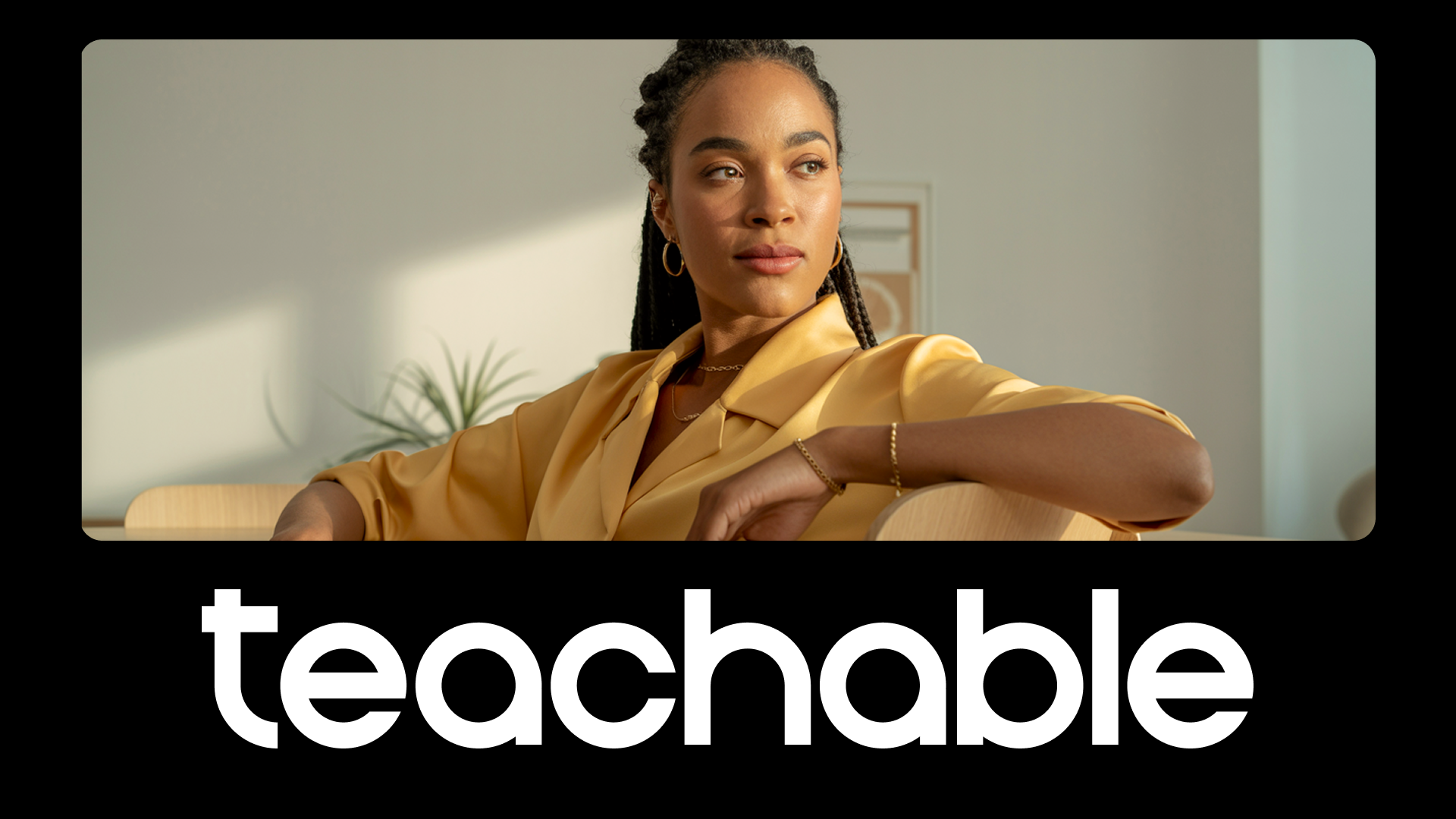The entire purpose of an online course is to help your students reach a desired outcome. You do this by figuring out what it is your audience wants to learn, crafting a killer curriculum, and creating course content that keeps your audience engaged and interested. You’re already an expert in what you’re looking to teach, so step one and step two should be easy enough. When it comes to actually creating the content though, we find people often have trouble. They know what they want to teach, but conveying that through creating course material oftentimes overwhelms would-be course creators. The truth is: Learning to create slides for an online course isn’t nearly as difficult as it might seem, so long as you know very basic design principles. That’s what we’re going to cover today.
We’ll share some of the best design secrets to help you create killer visuals and in particularly, slides. These tips can be used for any visual content you’re creating, like ads, your worksheets, other resources, and even on your sales page.
We’re going to walk through:
- When to use slides
- Layout tips
- Using colors and fonts
- Easy image tweaks
The best part is you don’t need to be a designer to implement these tips to create slides for online courses.
Why create slides for online courses?
First, slides are valuable and easy to create. If you’re trying to get content out quickly without having to set up a filming studio or film any videos, slides are great for that.
Most of you have probably used PowerPoint or Keynote at some point in your life. And that’s all you need to create slides for online courses. You can use text and images to create lessons for your students that can be flipped through quickly.
Your slides don’t have to be overly fancy or come with a ton of bells and whistles, as long as they clearly convey the information you’re trying to teach your students.
Tips for creating slides
Now, let’s get into the tips we mentioned earlier—layout tips, colors, fonts, and images to help you take your slides from blank to beautiful.
Any of these tips can be used on any type of visual content you create like Facebook ads, social media images, and most importantly, on your course sales page.
Format and layout
Before you begin designing, make sure your slides are in the video format you’ll be shooting in. For example, we shoot in a 16-by-9 aspect ratio. This is also an ideal YouTube ratio. In Keynote, we designed the slides in the widescreen format. Using slides that are in the same format as your video ensures that no information is cut off and makes editing easier.
Text
When you’re adding text to your slides, keep your copy short and to the point. Don’t put paragraphs of information onto your slides, or they’ll be too difficult to follow.
It’s too much for your audience to take and will cause them to become distracted. They’ll be trying to read everything on the slide instead of listening to you.
Instead, use bullet points or very short sentences. You can even use multiple slides for a point.
Your audience will thank you. Plus, it just makes everything look so much better.
Colors
Now, let’s dive into choosing colors for your slides, your brand, and even your sales page. If you already have a brand, use your brand colors in your slides.
Your online course is a direct extension of you and your brand, so your slides should have the same look and feel as the rest of your content. This way, when your audience sees your course, they’ll automatically know it’s from you because they recognize the brand you’ve created.
If you don’t have a brand or a color palette picked already, that’s OK. Picking colors for your slides is a really easy place to start. Choose two to three colors to use throughout your slides. Pick one dark and one light color because they stand out the best when used together. Then pick a third complementary color to use for emphasis.
Keep in mind ease of legibility and how the colors look together when picking yours. To help you choose the colors that work well together, below are three great sites you can use.
Tools for choosing colors
Colour Lovers: The first is Colour Lovers. It’s a search engine palette generator and a really great place to start, especially if you’re new to this. You can search for colors by keyword, hex code, and even by most recent creations.
Coolors: Coolors is super easy to use; all you need to do is push the spacebar. That’s it. Just go to the site, click generate palettes and press the spacebar, and a new palette comes up each time. To have more control, type in the color’s hex code. A hex code is that six-digit number that starts with a hashtag. It’s just one more way of representing a color, just like RGB or CMIK. Now once you type in the code, lock it so it doesn’t change. Then—you guessed it—push the spacebar and it will generate palettes that go with that color.
Adobe: The last one is Adobe. You can either start with a very specific color just like we explained in Coolors, or you can play with the color wheel and come up with palettes on your own.
Color associations
Now every color has certain characteristics associated with it. Pink, for example, is often associated as a feminine and romantic color.
Green is associated with wealth and balance, while blue is cool and trustworthy. Think about it. Most of the major banks you see—like Chase, for example—have blue in their logos. Why? Because they want you to trust them to take care of your money.
When choosing colors for your course, business, or brand, think about how you want to be perceived by your audience.
Using colors
The colors that you choose for your slides can be used as solid background colors, in shapes, or other design elements along the slides. For text, use one color for the header text or when you want to emphasize an important word. You can also use the other color for body text.
Another note on body text is that sticking with black or dark gray or white, depending on the background color, is really best.
It’s the most common and most standard, and more importantly, the easiest to read. It’s better to stick with those neutral colors for text, and then add bolder color in other ways.
Typography
Now let’s go into some tips about typography. First, choose a serif or sans serif font for your text. The difference between them is the serif font has little tails on the edges of the letters, while the sans serif font does not.
Choosing fonts
Avoid using decorative or script fonts because they’re a lot harder to read, especially when they’re small. Yes, these fonts might add pizazz to your slides, but they’re not good for getting a lot of information across.
Go with a sans serif or a serif.
If you go to the website FontSquirrel, you’ll find free fonts for commercial use that can give your content something extra. Just like color sites, you can search by key words and font styles, for example, hand lettered, serif script, etc. Then all you need to do is download the fonts that you like and install them on your computer.
A quick warning about using these fonts in your slide decks: Since they’re not commonly found on most computers, if you share your Keynote or PowerPoint files with somebody else, you will need to give them a zip file of the font. Otherwise, the content will look different because Keynote or PowerPoint will replace with a different font. Make sure you have your person install all the font first onto their computer before opening the Keynote files. Or, to keep things easier, just share a PDF version.
Font sizing
One last thing to remember when you’re choosing fonts is to make sure you use one that’s large enough to read.
Don’t go for a size 20 font. It’s way too small. Start with at least 40 points, and even that can be pushing it. Bigger is always easier to read.
Visuals
Visuals keep your audience engaged, and make your slides look awesome.
StockSnap and Pexels are two stock aggregate sites. Search for anything and chances are, they have it. The images on Unsplash are all breathtaking and worth checking out.
Gratisography is a pet project of photographer and designer Ryan Bell, filled with entertaining, laugh-out-loud images.
Combining text & images
Now that you’ve found your images, let’s talk about how to use text with them. If the image is dark, use white as your text color. White stands out the best on images, even compared to other lighter colors, like a pale yellow of blue. Obviously every image is different, but start with white.
Test out other colors if white doesn’t look great, but just make sure you can read it.
If the image is light, you should use a dark-colored text. (You might’ve already guessed that.)
If the photo has a lot of colors or just a lot of stuff going on, add a shape over it. Then add the text on top of your chosen shape. When doing so, make sure you add the text in its own text box. This way, you have more control over the formatting versus if you add the text directly into this shape.
Another way to make text readable on a busy photo is to add a solid color rectangle over the image. All you need to do is to make a rectangle the size of the slide, pick your color, place it over the photo, and then reduce the opacity until you’ve reached your desired image-to-color ratio. This is another great way to bring your brand colors into your slides.
You can also reverse that process. Instead of putting a color on top of the image, you can reduce the opacity of the image itself, so it appears faintly in the background.
If you follow these tips, you’ll be able to create slides for online courses with ease.
Join more than 150,000 creators who use Teachable to make a real impact and earn a real income.



.png)



.png)

